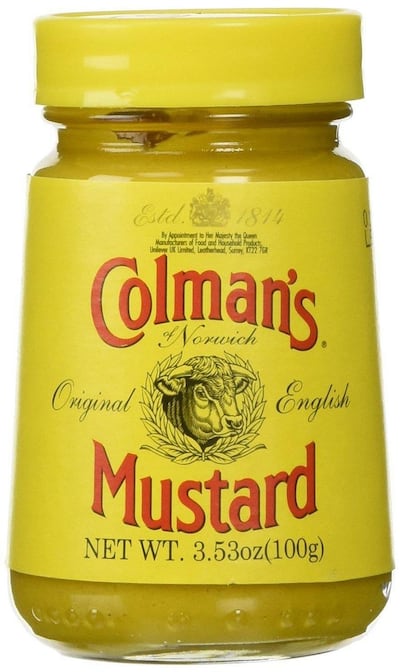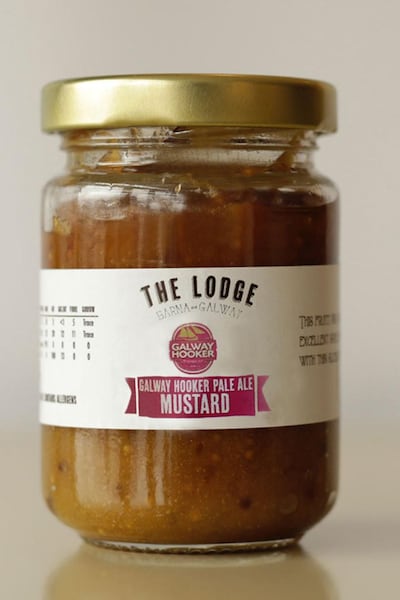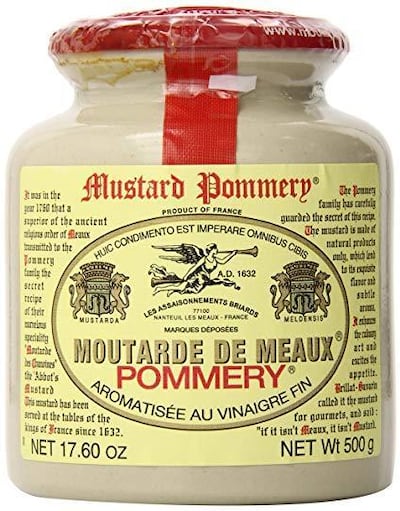It was a trip to Brussels that did it. Mustard seemed to be everywhere. It wasn’t simply used with frites and hot dogs, but with anything meaty or fried. It’s the condiment of choice for many people there, and a common addition to dinner tables. It was a shock for someone who had grown up rejecting Colman’s English Mustard to discover that mustard did not have to be dusty and harsh. It can be anything from tangy to mild or creamy.

Back in Ireland, I found there is quite a range on sale here and that many of the best are Irish. Supermarket offerings are often limited to big brands, but farmers’ markets, butchers and smaller shops have interesting options that have been made locally.
The selection is so good that Blas na hÉireann, the annual Irish Food Awards, has a category just for mustards. Last year, Brigid Brophy of The Lodge in Barna took gold for her Galway Hooker Pale Ale mustard, which is flavoured with the popular drink with the full approval of its brewers. Hers is available mainly in the west.
It’s worth searching out these artisan products. On paper, the difference between the many mustards boils down to whether they are wholegrain, smooth English or French. In practice, it comes down to who makes it, what they add and how it tastes.

So, for example, in addition to the pale ale, The Lodge’s Galway Hooker mustard includes just brown and yellow mustard seeds, brown sugar, malt vinegar and olive oil. Even though mustard grows wild here and its yellow flowers can be seen through summer, it is not a viable commercial crop. So the seeds are from the Middle East. These are the same type of seeds used in some curries.
The Lodge’s Prosecco and Tarragon mustard sauce has just mustard seeds, mustard powder, Prosecco vinegar, soft brown sugar, salt, virgin olive oil and chopped tarragon. Although it has no ingredients that contain gluten, it is not listed as gluten-free because it uses the mustard powder milled in a facility that also processes wheat. (Of course, mustard itself is one of the listed top allergens.)
These compare well to Pommery Mustard from Meaux, a French mustard still made by a French company. This condiment, which boasts on the label that it has been served at the tables of French kings since 1632, is made in the district of Nanteuil-lès-Meaux outside Paris. The grainy mustard has nothing more than water, mustard seeds, vinegar, salt and spices. Though be warned that it comes in heavy stone jar.

Compare those to the Colman’s English Mustard, which is now made by food and consumer goods giant Unilever. It has water, mustard flour (21 per cent), sugar, salt, wheat flour, turmeric, citric acid and xanthan gum.
There’s a surprising amount of sugar in there considering how plain it tastes. The end product is 13 per cent sugar, though not all of this will have been added in the processing. The turmeric is there to add a rich yellow colour. Citric acid can give a tart taste and act as a preservative. Xanthan gum is down as a stabiliser, though it is interesting that artisan products don’t need it.
To be fair, that is a different type of mustard. It has more in common with the squeezy Heinz mustard, though this has no filler flour. It has water, mustard seeds (16 per cent), spirit vinegar, barley malt vinegar, sugar, salt, honey, spices, flavouring, xanthan gum and paprika extract for colour and taste. This has less sugar even though there is added honey.
Don’t be confused by French’s Classic yellow mustard, which isn’t French. It’s American and really is hoping to be spread onto a hot dog. It has spirit vinegar, water, mustard seed, salt, turmeric, paprika, spice, flavouring and garlic powder.
When we think of French mustard, we usually mean the smooth, traditional French variety. Dijon was created in that town of that name in Burgundy. It is the home of the Maille brand of mustard, which is owned by Unilever also. Maille’s Dijon, in its familiar rounded jar, has water, mustard seeds, spirit vinegar, salt, citric acid and potassium metabisulphite as a preservative.
It’s a decent product, but even better is Bunalun’s version. It contains mustard seeds, spirit vinegar, water and salt. Water isn’t the first ingredient. There are no fillers or preservatives and everything is organic. It has no sulphites either, which is a relief for those who need to avoid them.
Plus it’s an Irish firm based in Co Kerry.
What more could you ask?
FOOD LABELS SERIES
- Bread
- Soup
- Crisps
- Sliced ham
- Cream crackers
(search other food labels articles here)












